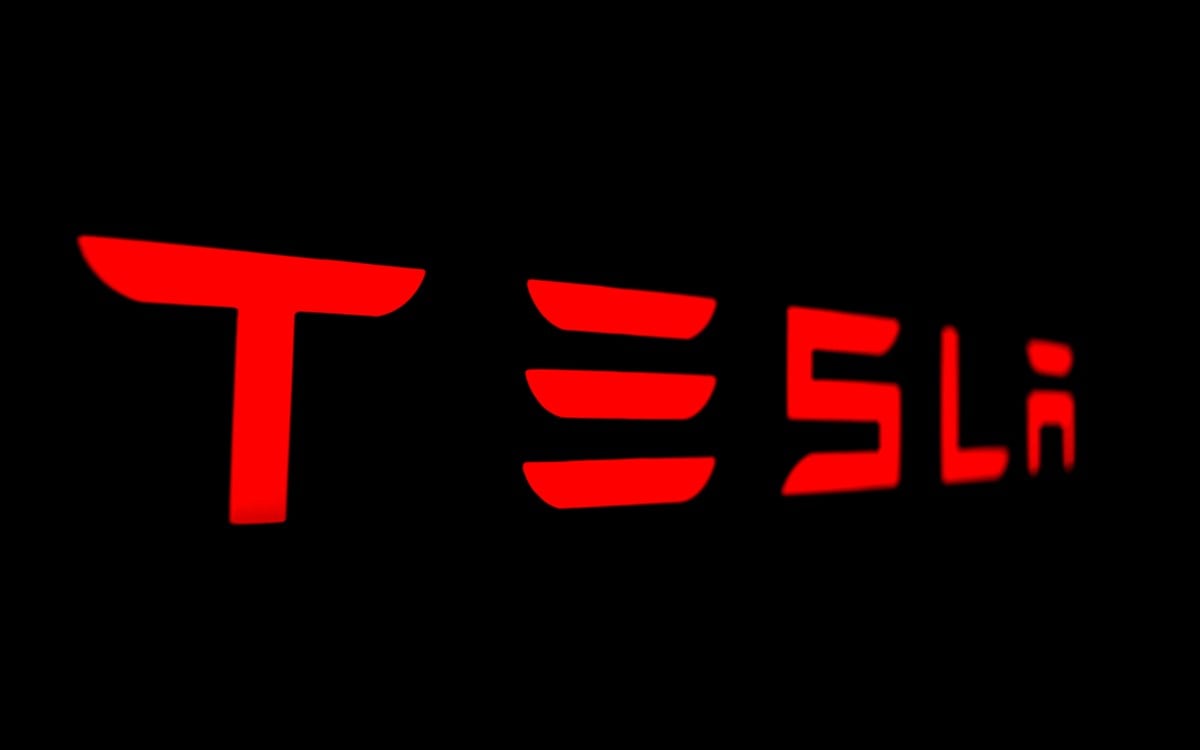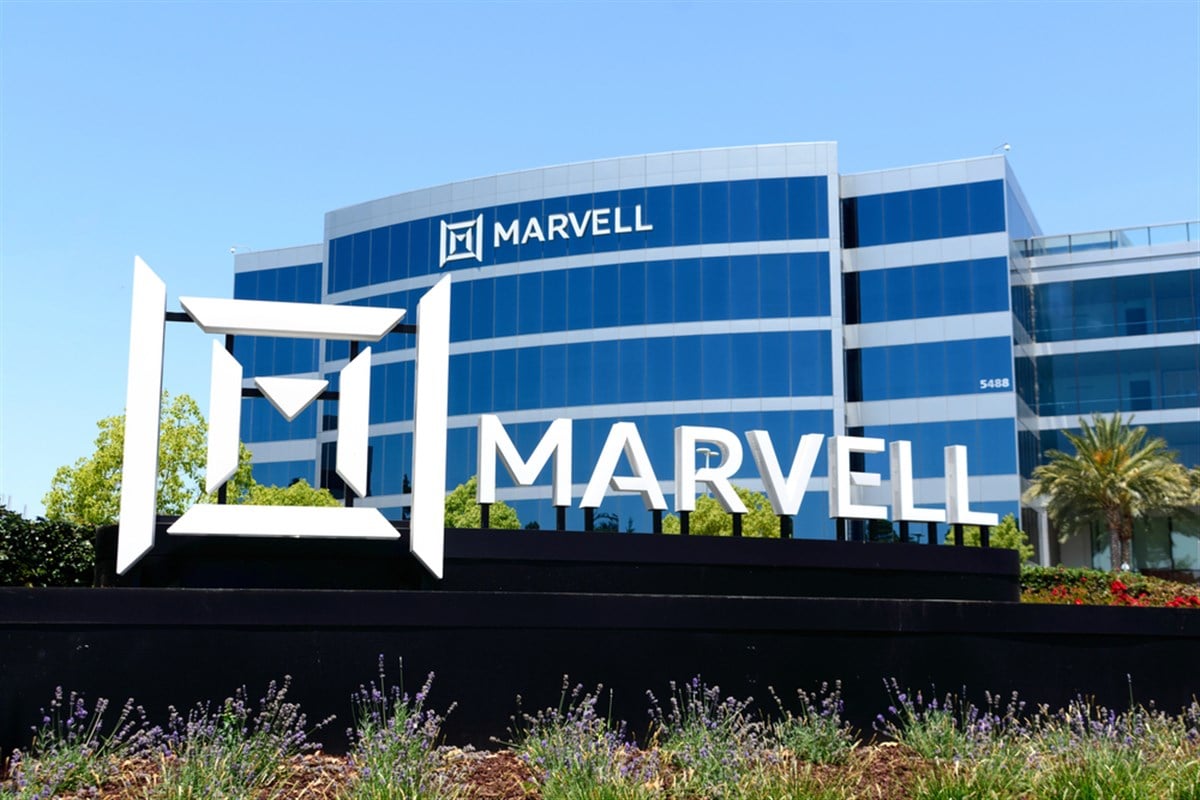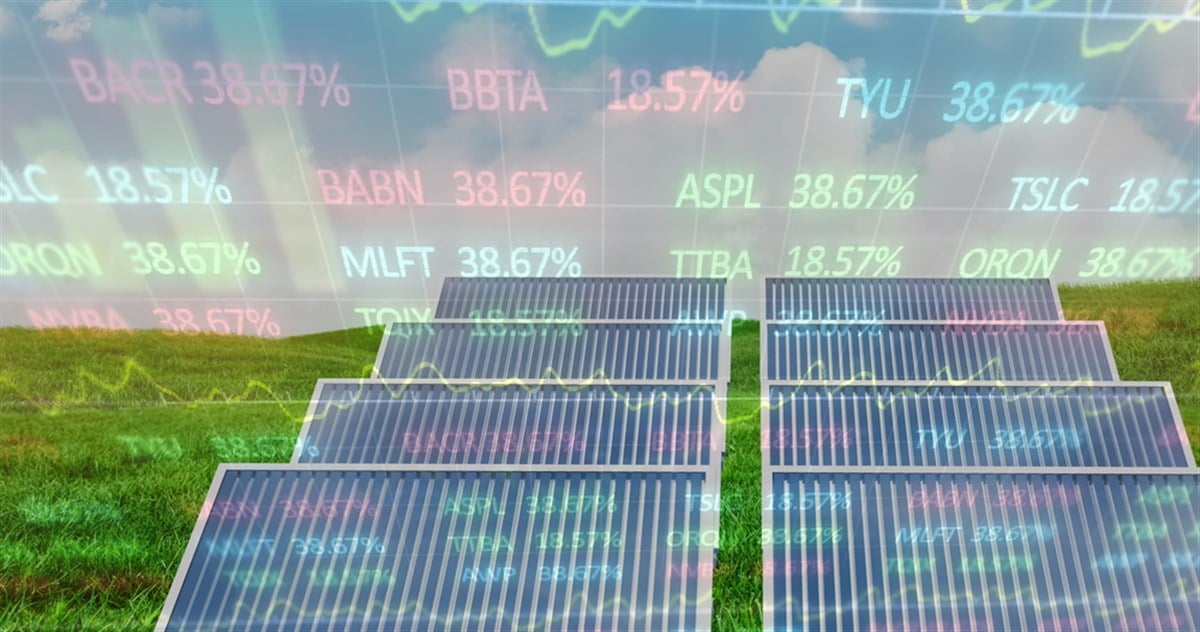 Tesla stock could be one of the biggest beneficiaries of the new legislative bill, since tax implications for American cars are set to boost... ͏ ͏ ͏ ͏ ͏ ͏ ͏ ͏ ͏ ͏ ͏ ͏ ͏ ͏ ͏ ͏ ͏ ͏ ͏ ͏ ͏ ͏ ͏ ͏ ͏ ͏ ͏ ͏ ͏ ͏ ͏ ͏ ͏ ͏ ͏ ͏ ͏ ͏ ͏ ͏ ͏ ͏ ͏ ͏ ͏ ͏ ͏ ͏ ͏ ͏ ͏ ͏ ͏ ͏ ͏ ͏ ͏ ͏ ͏ ͏ ͏ ͏ ͏ ͏ ͏ ͏ ͏ ͏ ͏ ͏ ͏ ͏ ͏ ͏ ͏ ͏ ͏ ͏ ͏ ͏ ͏ ͏ ͏ ͏ ͏ ͏ ͏ ͏ ͏ ͏ ͏ ͏ ͏ ͏ ͏ ͏ ͏ ͏ ͏ ͏ |
| | Written by Gabriel Osorio-Mazilli 
Some controversy has resurfaced in the stock market as President Trump rolled out the One Big Beautiful Bill, which will likely create a new wave of debt to be added to the United States economy. However, the main difference with this bill is that most of this newly injected capital is aimed at positive return projects rather than pursuits that won’t stimulate many areas of the economy. One of these areas is taxes; nothing stimulates production and spending like a more favorable tax positioning in any economy, which is where investors need to place their attention when it comes to understanding this new bill. Overall, there are numerous benefits in the details of the tax implications, but one targeted aspect will make some names in the automotive sector winners in the coming months and quarters. The most obvious one, of course, is Tesla Inc. (NASDAQ: TSLA). Tesla has significantly increased its market share in the electric vehicle (EV) sector through cutting-edge technology and strong consumer appeal, positioning that will benefit it from the new bill's tax advantages for Tesla buyers. These themes are already influencing, and will continue to influence, the stock’s performance. How Tesla Benefits From the New Bill Under the new legislative action, a tax break will be implemented for all vehicles assembled in the United States, regardless of where their parts are sourced, as long as the final assembly occurs domestically. With this in mind, Tesla is perfectly positioned to qualify its customers for this benefit. Considering how popular and accessible Tesla vehicles have become in the United States, any additional tax incentives—such as federal EV credits for U.S.-assembled models—could further boost demand. The potential savings on ownership costs may become more apparent to consumers, especially if Tesla highlights these benefits during the financing stage of the sales process. Following the new implementation, Tesla shares have increased by just under 1.5% so far this week, surpassing the broader S&P 500 index by 1.7%. Achieving this during a period of heightened uncertainty caused by ongoing tariff negotiations and other economic factors is no easy task. However, when it comes to potential upside, investors have seen only a fraction of what Tesla could truly accomplish in this new favorable environment, as this tax break catalyst has not yet been fully priced into the company’s valuation. The Market’s Take on Tesla Stock Compared to other large-cap names in the technology space, Tesla offers a wide margin for investors to benefit from a “catch-up” rotation. As the stock still trades at only 62% of its 52-week high, it offers both upside and an attractive margin of safety, given the limited downside it could experience in the future. These are the sort of asymmetric returns that investors love to act on in the rare occasions that the markets offer them, which is why acclaimed Wedbush analyst Dan Ives decided to reiterate his Outperform rating on Tesla stock as of early July 2025. Not only does the rating convey an optimistic note regarding the new bill, but it also includes his price target of $500 per share, which would call for a new 52-week high, along with a net implied upside of 70% from the current stock price. What happens when the momentum for Tesla stock gets going could be confirmation that investors may already be too late. Meeting these expectations and surpassing fundamentals driven by these tax breaks, the stock's performance could trigger new buying activity from institutional investors who typically seek such breakouts and bullish momentum stocks. However, when these positions are reported, it will be too late for retail investors to take action. Currently, Tesla's 163.4x price-to-earnings (P/E) ratio places it at a significant premium over the average 23.8x valuation multiple in the automotive industry, and there’s a strong reason for this premium: a differentiated product, superior market share, and the right size to capitalize on these new tax incentives. The markets are usually willing to overpay for stocks they believe can outperform the rest of the market and peer group in the near future. It looks like Tesla has all of the right components for this to be the case moving forward, showing investors why this new fundamental change could fulfill the $500 valuation if not more.  Read This Story Online Read This Story Online |  The AI boom isn't just transforming technology—it's redefining global power, increasing government debt, and ushering in more economic uncertainty.
Claim your FREE AI & Gold Report today and learn what central banks, investors, and analysts are seeing—and how gold can help protect your savings in an uncertain, AI-driven world. ▻ Get ahead of the trend—CLICK HERE to claim your FREE AI & Gold Report now! |
| Written by Jeffrey Neal Johnson  The artificial intelligence (AI) boom is reshaping the global economy, but for many investors, the most visible players come with sky-high price tags. The search is on for companies that offer strategic exposure to this explosive growth without demanding a prohibitive premium. The artificial intelligence (AI) boom is reshaping the global economy, but for many investors, the most visible players come with sky-high price tags. The search is on for companies that offer strategic exposure to this explosive growth without demanding a prohibitive premium.
This has drawn attention to the essential, yet often less hyped, companies that build the foundational hardware of the AI revolution. Marvell Technology (NASDAQ: MRVL) is a prime candidate in this search. As a leading designer of the advanced semiconductors that power data centers and AI networking, Marvell is integral to the industry's expansion. Following a significant pullback in its stock price through 2025, the company now offers what has become rare in the tech sector: a compelling growth story paired with a more down-to-earth valuation. Marvell’s Pullback Created an Attractive Entry Point The company's investment case begins when you look at Marvell’s price chart. Through the first half of 2025, shares have declined by approximately 35%, bringing the price below $75. This underperformance was not caused by a failure in the company’s strategy but rather by broader market headwinds. Widespread investor concerns about the global economy and speculative fears over potential new tariffs on Asian trade partners have created pressure on the entire fabless semiconductor industry, which relies on manufacturing foundries in the region. This market-driven price reset is what creates the current opportunity. It has pushed Marvell’s valuation to a level that stands out in the crowded tech sector. The company now trades at approximately 25x its projected forward earnings per share (EPS). To put that in perspective, the tech-heavy Nasdaq-100 index carries an average forward price-to-earnings ratio (P/E) that tends to range between 34 around 40 depending on the timescale. Finding a key AI player trading at a notable discount to the sector average is uncommon. This dynamic, where a company’s long-term growth trajectory appears disconnected from its current stock price, is precisely the kind of setup that value-conscious growth investors seek. How Marvell Plans to Win the Next Phase of AI A compelling valuation is only half the story; a credible path to future growth must back it. Here, Marvell has laid out an ambitious and transparent multi-year blueprint for investors centered on dominating the most lucrative segments of the data infrastructure market. The primary engine of this plan is Marvell's strategic push into the custom silicon, or ASIC, market. As cloud giants seek to optimize performance and control the immense power costs of their AI models, they are increasingly moving away from off-the-shelf chips. Instead, they partner with firms like Marvell to co-design unique processors tailored to their specific needs. This creates a deep and very sticky relationship that is difficult for competitors to disrupt. Marvell's goal is to increase its market share from 5% in 2023 to 20% by 2028. Based on industry projections, achieving this target would generate $11 billion in annual revenue from this high-margin business alone. Beyond the development of custom chips, Marvell is targeting the entire data center ecosystem. The company plans to expand its total data center market share from 13% last year to 20% of a projected $94 billion market by 2028. This represents a clear path toward nearly $19 billion in annual data center revenue, which would be a potential fivefold increase from its fiscal 2025 results. This ambitious vision is grounded in a tangible technological advantage. Marvell is a leader in developing next-generation 2-nanometer (2nm) chips. This new platform is designed to deliver 15% higher performance while, crucially, consuming up to 35% less power than the current 3nm technology. In an industry where data center electricity usage is a primary operational cost and environmental concern, this efficiency is a powerful selling point. This tech edge is how Marvell plans to win over new clients, with a stated goal of expanding its custom AI customer base from four to ten by 2028, systematically de-risking its revenue stream along the way. Why Marvell Stands Out for Long-Term Investors For investors navigating the complexities of the AI market, Marvell Technology presents a clear and compelling case. The recent market-wide pressures have pushed its valuation to an attractive level, creating a potential discount relative to its peers. At the same time, the company has offered a transparent, multi-year roadmap for substantial growth, underpinned by a distinct technological advantage in a market that prioritizes performance and efficiency. It is this rare combination of value and vision that makes Marvell a standout opportunity for those looking to invest in the future of artificial intelligence.  Read This Story Online Read This Story Online |  |
| Written by Dan Schmidt 
The One Big Beautiful Bill (OBBB) Act is now law, and with it come several new rules and rollbacks that could weaken the clean energy industry in the U.S. While the bill's primary focus has been tax cut extensions, the legislation also eliminates many incentives for solar power, especially those in residential areas. However, while the bill remains a net negative for solar power companies, the Senate version has removed some of the more onerous provisions, and the industry may not be facing the death knell some executives feared. Today, we’ll look at which regulations did and didn’t make the OBBB Act’s final cut, and examine three stocks that can still thrive despite the new solar headwinds. Why Solar Energy Is Feeling the Heat Under New Tax Bill Under the 2022 Inflation Reduction Act (IRA), the investment tax credit (ITC) and production tax credit (PTC) for solar systems were extended by a decade, fueling the growth of solar energy adoption in both residential and commercial areas. However, the OBBB Act marks a swift reversal of many of these policies, including the abrupt cancellation of a crucial residential credit. Here are some of the noteworthy provisions for the solar industry: - Residential Solar Credit Phase Out - The 30% tax credit for residential solar systems under Section 25D will now expire on December 31 of this year, nearly a decade ahead of schedule.
- Project Timeline Limitations - Utility and commercial projects under Sections 45Y and 48E will see a phase-out of the 30% tax credit after 2027, with the credit being eliminated for projects started after 2029. However, this language is softer than the House version, and allows projects started within 12 months of the bill’s passage to be exempted from this deadline.
- Foreign Entity of Concern (FEOC) Tests - Companies can still sell clean energy tax credits to other taxpaying entities, provided they don’t fall on an FEOC list. FEOCs were defined in the IRA but expanded in the OBBB, which would reduce the number of potential tax credit buyers.
Last Minute OBBB Revisions Should Blunt the Pain for These 3 Solar Stocks The Senate version of the OBBB Act, eventually signed into law, removed some of the stricter regulations against the solar sector, including an excise tax on imported modules, the most stringent timelines for commercial projects, and the cancellation of tax credit transferability. It still doesn’t bode well for solar as a whole, but these three companies should still be able to thrive in this environment. NextEra Energy: A Deep and Diversified Renewables Portfolio In stocks, there’s often safety in size, and NextEra Energy Inc. (NYSE: NEE) is one of the largest diversified clean energy companies in the U.S. No one produces more solar or wind capacity than NextEra (33,000 megawatts of operating energy in 2023), and its substantial output and focus on large-scale projects should help it navigate a less friendly regulatory environment. NEE shares look affordable based on historical data, and even more so when using forward projections. The stock trades at 27.5 times earnings, a tick below the 10-year average P/E of 29.1. However, the 12-month forward P/E ratio stands at 20.3, and this is expected to decrease to 18.8 by the end of 2026 and 17.2 by 2027. After a negative 2023, EPS growth rebounded 26% in 2024, with smaller but still significant projections of 7.2% for 2025 and 8% for 2026. The company missed revenue expectations in its Q1 2025 earnings report, but sales still grew 9% year-over-year (YOY), and EPS numbers matched analyst expectations. The average analyst price target of $84.55 still indicates upside potential of nearly 14% as well. First Solar: Domestic Manufacturing Dominance First Solar Inc. (NASDAQ: FSLR) specializes in manufacturing solar modules and operates some of the world’s largest photovoltaic power plants. Despite the sudden solar phaseouts, First Solar’s focus on producing its modules and plants in the U.S. could give it a competitive edge in this new energy environment. First Solar’s thin-film cadmium telluride modules can be manufactured with 100% domestic components, freeing the company from tariff pressure and FEOC restrictions. Despite the bill’s harsh implications, this domestic dominance is partly why Royal Bank of Canada increased its price target from $188 to $200 this week. Of the 31 analysts covering the stock, 26 now have Buy ratings with an average price target of $228.69, implying an upside from current levels. Nextracker: Protection Through Limited Residential Exposure Nextracker Inc. (NASDAQ: NXT) sold nearly $3 billion worth of solar trackers in the last 12 months. Trackers are devices that pair with solar panels to track the sun across the sky, much like a sunflower. They optimize solar efficiency by keeping panels perfectly aligned for maximum sunlight exposure. Solar trackers are primarily used in large utility-scale projects, which offer Nextracker some protection from the phase-outs of the solar tax credit. The stock also appears attractive compared to other solar companies, thanks to its affordable valuation and strong margins. NXT trades at just 19 times earnings, and it boosted net profit margins to 17.21% in the most recent quarter. The $679 million quarterly revenue also represented a 15% YOY increase, showing the company can grow while protecting its margins.  Read This Story Online Read This Story Online |   Over a year ago, I went LIVE to reveal a brand new setup called "Automated Options" to the world — where all we needed to do was place a quick trade…
Wait for a couple of weeks…
And when everything worked out, we were able to walk away with $1,250 in extra income (with a $5k starting stake).
After showing my closed group of traders how to leverage this setup to find opportunities in any market condition…
I set out to look for a better, more straightforward way to target extra income in a fraction of time…
And what I found didn't only help me supercharge these automated options…
But it also showed me how we can target income overnight — nearly every day the market is open!
The best part?
Unlike the automated options that take two weeks to target opportunities…
All you need is just two minutes to place a quick trade before the market close.
And if everything works out just as planned, you could walk away with extra cash in less than 24 hours!
Take March 19th for example.
If you had known about these overnight opportunities, you would've placed a quick trade with me…
And sure enough, it would've paid out $1,086 in overnight income. If you follow this link, you'll see everything she has laid out, |
| More Stories |
| |
|
|
0 Response to "🦉 The Night Owl Newsletter for July 9th"
Post a Comment